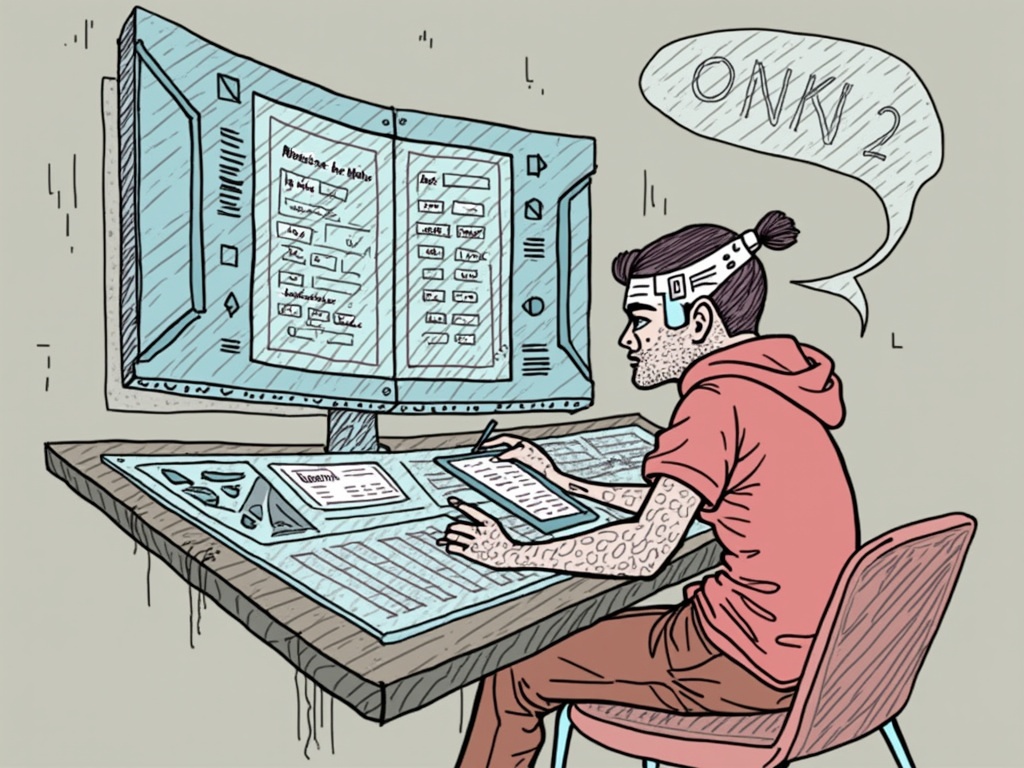The interactive fiction landscape has evolved dramatically, with developers now having access to sophisticated tools that balance ease-of-use with powerful narrative capabilities. In 2025, the best platforms for writing interactive fiction range from beginner-friendly options like Twine to professional-grade tools like Articy Draft, each catering to specific needs in this rapidly expanding creative medium.
Key Takeaways
- The interactive fiction market has seen exponential growth, with over 32,525 games on itch.io alone
- Mobile-first development has become a dominant trend in interactive fiction creation
- Open-source tools like Twine offer accessible entry points for beginners without coding experience
- Professional narrative design platforms provide advanced features for complex storytelling projects
- Community engagement through platforms like IFDB has become crucial for success in the interactive fiction space
The Interactive Fiction Renaissance
Interactive fiction has transformed from its text-adventure roots into a vibrant creative medium spanning multiple platforms and formats. What is interactive fiction? At its core, it’s a form of digital storytelling where readers make choices that affect the narrative outcome, creating a personalized experience unlike traditional linear media. By 2025, this genre has seen remarkable growth, with itch.io hosting over 32,525 interactive fiction games, showcasing the medium’s popularity.
The modern interactive fiction landscape is shaped by several key trends. Mobile-first development has become standard as creators recognize the immense potential of smartphones as storytelling platforms. Accessibility tools have lowered the entry barrier for both creators and players, while community-driven platforms foster collaboration and feedback. AI interactive fiction has also emerged as a significant innovation, with artificial intelligence enhancing narrative possibilities through dynamic story generation and adaptive gameplay.
Leading Development Tools for Every Creator
If you’re wondering how to write interactive fiction, the first step is selecting the right development tool. The platform landscape in 2025 offers options for creators at all skill levels, from coding novices to professional narrative designers.
Twine stands out as the gateway to interactive fiction creation. This open-source platform requires minimal coding knowledge, making it perfect for beginners and narrative-focused creators. Its visual flowchart interface allows authors to map story branches intuitively, and notable projects like “Bloodbark” and “Text Your Life” demonstrate its versatility. Twine exports directly to web formats, enabling easy publishing and sharing.
For those seeking more sophisticated narrative capabilities, Inky & Ink offers professional-grade scripting tools. Developed by Inkle Studios (creators of acclaimed titles “80 Days” and “Highland Song”), Ink provides an advanced scripting language designed specifically for complex, branching narratives. Its integration capabilities with Unity and other game engines make it a favorite among developers bridging the gap between interactive fiction and video games. The platform’s JSON export format and growing plugin ecosystem further extend its versatility.
Learning how to make interactive fiction has never been more accessible thanks to these tools that balance power with usability.
Comparative Analysis: Core Platforms
When selecting the right platform for your interactive fiction project, several factors deserve consideration. The table below compares key aspects of the leading development environments in 2025:
- Twine: Free, requires minimal coding, ideal for beginners and text-focused IF. Exports to web, HTML, and desktop platforms.
- Inky/Ink: Free, requires scripting knowledge, best for complex narratives and game integration. Exports to JSON, Unity, and supports plugins.
- Articy Draft: Paid solution, requires moderate coding skills, designed for large teams and AAA development. Supports export to multiple game engines.
Each platform offers distinct advantages depending on your project scope, team size, and technical expertise. Beginners often start with Twine to learn the fundamentals of interactive fiction ai before progressing to more complex tools like Ink or Articy Draft as their projects grow in scope and ambition.
Mobile-First Interactive Fiction Platforms
The shift toward mobile consumption has revolutionized how interactive fiction is created and experienced. Mobile-first platforms have emerged to serve this growing market segment, offering specialized tools for smartphone-centric storytelling.
Mytales has established itself as a leading community-driven mobile storytelling platform. This app-based creation and sharing ecosystem features a user-friendly interface specially designed for casual writers who may lack technical expertise. Its built-in publishing system and audience metrics help authors understand how readers engage with their stories, facilitating continuous improvement.
“Unwritten: How Will Your Story End?” exemplifies effective mobile narrative design. This critically acclaimed title employs hybrid gameplay mechanics that blend traditional interactive fiction elements with innovative mobile-specific features. Its free-to-download model has cultivated a dedicated fanbase, demonstrating the commercial viability of thoughtfully designed mobile interactive fiction.
These platforms show that writing your first interactive story no longer requires desktop development tools, as mobile creation has become increasingly sophisticated.
Distribution & Community Hubs
Creating interactive fiction is only half the battle; finding an audience requires strategic use of distribution platforms and community hubs. The ecosystem in 2025 offers several options for sharing your work and connecting with readers.
The Interactive Fiction Database (IFDB) serves as a central catalog for the genre, hosting over 1,200 games with a sophisticated recommendation engine. This specialized platform focuses on both parser and choice-based interactive fiction, providing community reviews and curation tools that help quality works gain visibility in an increasingly crowded market.
Itch.io has emerged as the dominant marketplace for independent interactive fiction, hosting over 32,525 titles spanning various styles and formats. Its low barrier to entry and flexible monetization options make it accessible to creators at all levels. Notable successes like “Divorce Chatroom” and “Killer Chat!” demonstrate the platform’s potential for reaching substantial audiences. Interactive fiction ai creators particularly benefit from itch.io’s analytics and community engagement tools that provide valuable feedback on player experiences.
These platforms demonstrate that building a sustainable audience for interactive fiction requires not just quality content but also strategic community engagement and distribution planning.
Professional Narrative Design Ecosystems
For commercial studios and professional narrative designers, interactive fiction development often requires enterprise-level tools capable of managing complex storytelling projects across teams. These sophisticated platforms offer features beyond what’s available in entry-level tools.
Articy Draft represents the gold standard for professional narrative architecture in 2025. This cross-platform toolset facilitates management of intricate story structures, with robust character, dialogue, and quest tracking capabilities. AAA studios regularly employ Articy Draft for large-scale narrative projects where coordination among multiple writers and designers is essential.
Collaborative planning tools like Miro have also found a place in professional interactive fiction development. These platforms excel at team-based story mapping and workflow visualization, integrating seamlessly with other narrative development tools. During pre-production planning for complex interactive narratives, these tools help establish clear creative direction and technical requirements before actual development begins.
The professional ecosystem demonstrates how interactive fiction has matured into a sophisticated discipline with dedicated toolsets for large-scale narrative projects. Teams looking to build a story world from scratch increasingly turn to these comprehensive solutions.
Emerging Trends in Interactive Fiction (2025)
The interactive fiction landscape continues to evolve rapidly, with several distinct trends shaping the medium’s future. Understanding these developments helps creators position their projects effectively in this dynamic environment.
Mobile platform dominance has solidified, bringing with it shorter consumption cycles as readers engage with interactive fiction in brief sessions throughout their day. This shift has implications for pacing, story structure, and monetization strategies, with successful creators adapting their storytelling approaches accordingly.
Community-driven development has become increasingly important, with feedback loops between authors and readers shaping stories in real-time. Platforms that facilitate this exchange are seeing higher engagement rates and more successful projects compared to traditional publishing models.
Cross-platform narrative engines continue to gain traction as creators seek to publish their interactive fiction across multiple devices and environments. Tools that simplify this process are seeing rapid adoption, especially among indie developers targeting diverse audiences.
Accessibility features have become standard rather than optional, with text-to-speech integration, customizable interfaces, and alternative navigation methods now expected by audiences. This focus on inclusivity has expanded the interactive fiction market while promoting innovation in user experience design.
Recommended Platform Combinations
While individual tools have their strengths, many successful interactive fiction creators leverage combinations of platforms to maximize their creative and distribution capabilities. These strategic pairings address different aspects of the development and publishing process.
For beginners just learning how to make interactive fiction, the combination of Twine, IFDB, and itch.io provides a comprehensive entry path. Twine offers an intuitive creation environment, IFDB connects creators with the existing interactive fiction community, and itch.io provides a straightforward publishing platform with built-in audience potential.
Mobile creators may find that Mytales paired with targeted mobile distribution channels offers the most direct route to reaching smartphone readers. This approach minimizes technical complications while providing valuable analytics on reader engagement.
Professional teams often employ Inky alongside Articy Draft and Miro, creating a workflow that spans initial concept development through to final implementation. This enterprise-grade combination supports the complex coordination needed for commercial interactive fiction projects with multiple stakeholders.
Experimental projects typically benefit from custom combinations based on specific narrative needs, often incorporating emerging technologies like AI-assisted writing tools or immersive reality components that push the boundaries of interactive fiction.
Choosing Your Interactive Fiction Toolkit
Selecting the right development environment depends heavily on your project’s specific requirements and your team’s technical capabilities. I recommend considering several key factors when building your interactive fiction toolkit.
Project scope should guide your platform selection—smaller, text-focused works may need only Twine, while ambitious commercial projects might require professional-grade tools like Articy Draft. Team experience also matters significantly; forcing non-technical writers to learn complex scripting languages can hinder creativity, while limiting experienced developers to simplistic tools may constrain innovation.
Community engagement has proven increasingly vital to success in the interactive fiction space. Platforms with active user communities often provide valuable feedback, troubleshooting assistance, and promotional opportunities that can significantly impact your project’s reception.
The future of interactive fiction development tools looks bright, with AI-assisted writing, enhanced accessibility features, and improved cross-platform capabilities on the horizon. As the lines between traditional gaming, interactive storytelling, and social experiences continue to blur, the tools for creating these experiences will likewise evolve to accommodate new creative possibilities.
Whether you’re a solo creator or part of a development team, understanding the platform landscape is your first step toward crafting compelling interactive fiction that resonates with modern audiences. The renaissance in this creative medium shows no signs of slowing down, offering exciting opportunities for storytellers willing to embrace its unique capabilities.
Interactive fiction has evolved dramatically, with platforms now balancing ease-of-use and powerful narrative capabilities. The market has seen exponential growth, hosting over 32,525 games on itch.io alone. Mobile-first development has become dominant, while open-source tools like Twine offer accessible entry points for beginners without coding experience. Professional platforms provide advanced features for complex storytelling projects, and community engagement through platforms like IFDB has become crucial for success.
Tools range from beginner-friendly options like Twine to professional-grade solutions like Articy Draft, each serving specific needs in this expanding medium. The shift toward mobile consumption has revolutionized creation and experience, with specialized platforms emerging for smartphone-centric storytelling. Distribution platforms and community hubs help creators find audiences, while professional narrative design ecosystems support complex commercial projects.
| Key Points | Details |
|---|---|
| Market Growth | Over 32,525 interactive fiction games on itch.io |
| Development Trends | Mobile-first approach dominates; accessibility tools lower entry barriers |
| Leading Platforms | Twine (beginners), Inky/Ink (complex narratives), Articy Draft (professional teams) |
| Distribution Channels | IFDB, itch.io provide community engagement and monetization options |
| Future Directions | AI integration, cross-platform capabilities, improved accessibility features |



